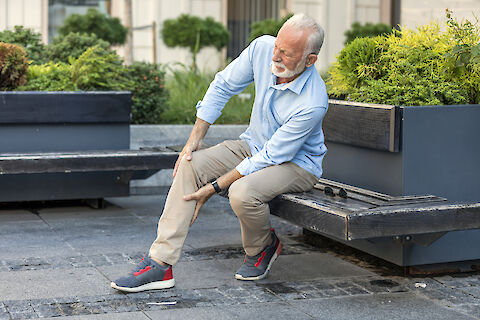
Peripheral artery disease (PAD) is a circulatory condition that affects the arteries leading to the legs and feet. PAD affects over 8 million Americans and is more likely to develop in those aged 60 or older. Although not always fatal, PAD can cause serious health concerns when left untreated. Therefore, it's essential to recognize the signs and symptoms of this condition so that seniors can receive the appropriate care and treatment they need from their medical providers.
What Causes PAD?
Peripheral artery disease is caused by a narrowing of the arteries due to plaque buildup, which can lead to a blockage in blood flow. This happens when cholesterol and other fat-like substances accumulate in your arteries, restricting the delivery of oxygen throughout your body. In addition, certain lifestyle behaviors (i.e. smoking) also can contribute to PAD.
Symptoms of PAD
Symptoms of PAD can vary depending on the severity and location of the blockages. However, common signs to look out for include:
- Leg pain (usually in the calf or thigh region)
- Loss of sensation (resulting in numbness or cold feet)
- Changes in skin color (such as bright red patches on pale skin)
- Open sores that don't heal
Risk Factors of PAD
Although age is the most notable risk factor, there are other lifestyle behaviors that can increase someone's chance of developing PAD. These include smoking, diabetes, and high cholesterol levels. High blood pressure and being physically inactive also can contribute to this condition.
Treatments for PAD
Treatments for PAD vary depending on the severity and medical history of the individual.
Medications
Medications like aspirin and Warfarin are often prescribed. Due to varying symptoms, however, each person experiencing PAD will require a different set of medications to assist them. Some may require anti-clotting drugs for their blood, while others may need cholesterol-lowering pills. High blood pressure medication may be necessary for those with blockages in their arteries or who have high blood pressure due to stress.
Lifestyle Changes
Making lifestyle changes can also prove useful in treating symptoms of PAD. Quitting smoking and adding exercise into your daily routine help.
Endovascular Procedures
In more serious cases, doctors may advise endovascular procedures, such as stents. This is often required when there is severe narrowing in the artery that causes a major blockage in blood flow or when medications fail to alleviate symptoms sufficiently.
Surgery
If nothing else has worked and symptoms progress, your doctor may advise you to have surgery. This is often a last resort after all other methods have been tried. Always speak to your doctor about your concerns so they can help assuage your fears and help you understand the benefits that can come from a surgical procedure.
Connect With Senior Helpers Cherry Hill
At Senior Helpers Cherry Hill, we are committed to providing high-quality in-home care and support services for seniors living with Peripheral Artery Disease and other chronic conditions. Our staff provides compassionate and professional in-home assistance to those in Marlton, Mt Laurel, Haddonfield, Maple Shade, Voorhees, Swedesboro, and Pennsauken. Whether you need help managing symptoms or adhering to medication regimens; let us provide the care you deserve. Contact us for more information on how we can provide excellent senior care services that cater specifically to PAD needs!